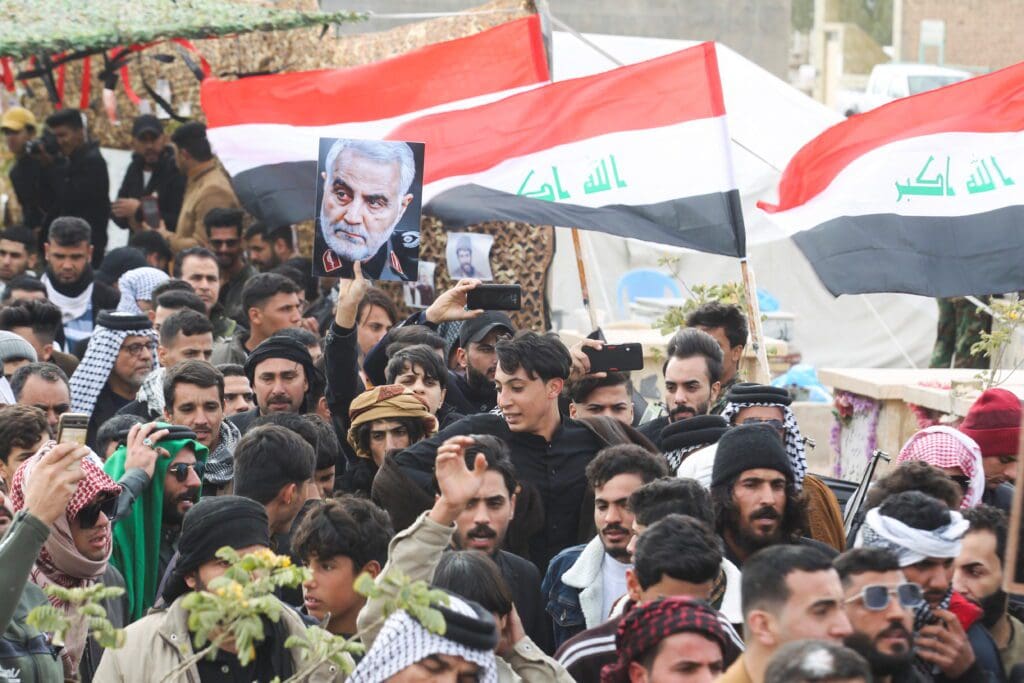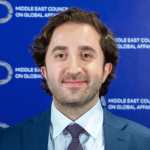The appointment of Iraqi Prime Minister Mohamed Shia al-Sudani in October has breathed new life into the Popular Mobilization Forces (PMF). A militia network formed in 2014 to fight the Islamic State in Iraq and Syria (ISIS), the PMF soon morphed into a political force to be reckoned with, making a strong showing in 2018 parliamentary elections. But since then, it has faced a string of setbacks, from assassinations of top figures to defections by powerful factions. The role of some PMF forces in repressing a wave of anti-Iran protests has also proven disastrous for their public image.
Sudani’s rise has again bolstered the network’s political and economic standing, with the backing of a powerful player: former premier and political veteran Nouri al-Maliki, who was instrumental in the PMF’s rise nearly a decade ago. But the remaining PMF factions are not alone in courting the loyalties of Iraqi Shiites. The bloc’s re-emergence as a key force in Iraqi politics could cause both intra-Shiite tensions and regional rivalries to boil over.
The rise of the PMF
It is difficult to overstate the ascent of Shiite militia groups since the 2003 American-led invasion of Iraq. During the past two decades, several groups have turned from rag-tag militias into powerful political players who now exercise considerable control over the Iraqi state. Some, such as the Tehran-backed Badr Brigade established during the 1980s Iran-Iraq war, were already firmly entrenched political actors prior to 2003. Other pro-Iranian groups such as Asaib Ahl al-Haq and Ketaib Hezbollah drew on battlefield successes against ISIS to become political players.
Iran played a key role in forming many of them. The powerful Iranian military general Qasem Soleimani worked for years with Basra-born Abu Mahdi al-Muhandis to build an Iranian proxy network based on personal relationships with key political leaders and commanders, a format Tehran has repeated elsewhere in the region. Muhandis, Soleimani’s right-hand man and a formidable political operator, had close operational connections to Iran’s Islamic Revolutionary Guard Corps (IRGC). As head of the PMF and Ketaib Hezbollah, he played a key role in cementing Iran’s influence over Iraq’s political system.
Iraq’s Shiite militia network is thus underpinned by an array of informal socio-political, cultural, and security structures that predate the 2014 fatwa by Iraq’s leading Shiite cleric Grand Ayatollah Ali al-Sistani calling on his followers to defend Iraq after ISIS swept into vast areas of the country’s north.
This ruling was however a turning point, bringing together both pro-Iran groups and the so-called shrine militias under the PMF umbrella, and giving the network the cover of Iraqi national and religious legitimacy. By the time ISIS had been defeated, the PMF was organized and popular enough to come second in 2018 elections, securing 57 seats in the 329-seat legislature. This crystalized the network’s status as a permanent fixture in both the political and security landscape.
Defections and Defeats
Over the following years, however, the network faced a series of setbacks. First, Soleimani and Muhandis were assassinated in a January 2020 U.S. drone strike near Baghdad airport. The resulting leadership vacuum sparked internal fractures, as well as emphasized the loss of two men who had ensured Iran’s proxies focused on long-term strategic objectives rather than getting bogged down in day-to-day politics. The assassinations pushed major PMF factions to resort to the guidance and political acumen of former Prime Minister al-Maliki, the head of the Islamic Dawa Party, whose tenure as premier had hastened the PMF’s ascension in the first place.
But worse was to come for the PMF. In mid-March 2020, several factions withdrew from the PMF umbrella and placed themselves under the authority of the Iraqi armed forces. The move was significant. The groups were aligned with Grand Ayatollah Ali al-Sistani, Iraq’s leading Shiite religious figure, and had traditionally resisted Iran’s influence but were compelled to operate within the ambit of the Iran-dominated PMF due to the threat from ISIS. Moreover, the PMF had initially received Sistani’s blessing, which provided the cover of Iraqi nationalism and religious legitimacy. But the withdrawal of the Sistani-aligned factions from the PMF left the Iran-backed proxies with limited religious cover and arguably diminished their political reach.
The PMF reached its lowest ebb in 2018, when Iran-aligned factions repressed civilians during the Tishreen protests that were calling for better services, jobs, cleaner governance and an end to Iran’s interference in the country. The resulting unpopularity was reflected in the 2021 parliamentary elections, which saw the PMF’s seats reduced from 57 to just 17. That was in contrast with the success of their main rival, followers of powerful cleric Muqtada al-Sadr, who won 74 seats, up from 54.
Is the PMF making a comeback?
The arrival of Sudani as head of state has given the remaining PMF factions an opportunity to regroup—or at least to diversify their revenue streams and expand their patronage networks. In November, Sudani approved the creation of a PMF-run trading company, Al-Muhandis, initially worth at least $67 million.
This may be a sign of things to come. The PMF is starting to emulate Iran’s Islamic Revolutionary Guards Corps (IRGC), which is as much an economic conglomerate as a branch of Iran’s armed forces. Through holding companies, front companies, and charitable foundations, the IRGC dominates several key sectors of Iran’s economy. Yet these militias are far from certain to replicate the IRGC’s economic power.
For a start, they have rivals in their bid to lead Iraq’s Shiites. First and foremost is Sadr, who sees himself as the rightful leader of the community. Politically, Sadr commands the loyalty of as many as three million Iraqi Shiites, as reflected in his success in the most recent parliamentary elections. Sadr sees himself as heir to his father, Mohammed Mohammed Sadeq al-Sadr, who was appointed as a marja’—a Shiite religious leader—under the pre-2003 Baathist regime. While the younger Sadr may not yet have the religious credentials to succeed Sistani as a supreme authority, his combination of religious and political influence makes him a powerful contender for Shiite communal leadership. This places him at odds with both the PMF and its political allies, such as Maliki’s Islamic Dawa Party.
The PMF-Sadrist power struggle has already threatened to spark more violence in Iraq. Last summer the country was pushed to the brink of civil war after exchanges between Sadrists and the PMF escalated into open conflict and the Sadrists storming parliament. While civil war was ultimately averted, new provocations are always close at hand. Asaib ahl al-Haq recently dispatched its parliamentarians on national television to warn their rivals from attempting to force their political agenda on Prime Minister Sudani. The move also has the secondary effect of limiting Sudani from making compromises in negotiations with actors outside of Iran’s orbit of influence. So, too, could an effort by Sudani to uproot Sadrist loyalists from state institutions spark an escalatory response from the Sadr camp.
Dangers of escalation
Last summer’s events showed that the apparent calm since Sudani’s appointment could easily be smashed apart by intra-Shiite rivalries—not to mention the decades-old regional power struggle playing out on Iraqi territory, primarily between Saudi Arabia and Iran. Ongoing protests in Iran could also complicate matters. Sudani must address the deep socio-economic grievances which sparked the Tishreen protests. If the protests return, this could in turn trigger renewed clashes between Sadr and the PMF, and even result in a return to civil conflict.
Yet despite its rivalries, the PMF is here to stay. It is deeply embedded within the state and has made an impressive rebound after its recent electoral defeat, despite opposition from large segments of the Iraqi public. The organization will however continue to face challenges. Last year’s confrontation exposed the vulnerabilities of Shiite militia groups, the PMF in particular, as well as their ability to survive fierce opposition. Ultimately, the future of the PMF and militia groups more generally will be determined by intra-Shiite dynamics.
The opinions expressed in this article are those of the author and do not necessarily reflect the views of the Middle East Council on Global Affairs.


